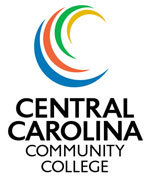
Medical Assisting
Occupational Risks
Purpose
This policy outlines the occupational risks associated with the profession of Medical Assisting and establishes guidelines and protocols to ensure the safety and well-being of medical assistants’ applicant and students in all healthcare environments.
Scope
This policy applies to all medical assistants’ applicants and students within all healthcare facilities.
Occupational Risks
Medical Assisting is a profession that involves various administrative and clinical duties, which can expose participants to several occupational risks. The following are the primary risks associated with this profession:
- Exposure to Infectious Diseases: Medical assistants may come into contact with infectious diseases while providing patient care or handling medical equipment and specimens.
- Sharps Injuries: Accidental needlestick injuries while handling needles, syringes, or other sharp medical instruments can pose a significant risk.
- Bloodborne Pathogens and Biological Hazards: Medical assistants may be exposed to bloodborne pathogens and biological hazards, including handling bodily fluids and tissues.
- Chemical and Drug Exposure: Exposure to hazardous chemicals and medications can occur while preparing and administering treatments.
- Ergonomic Hazards: Lifting, sitting for extended periods, and repetitive tasks can lead to ergonomic hazards, resulting in musculoskeletal injuries.
- Latex Allergies: Some medical assistants may develop latex allergies due to prolonged exposure to latex-containing medical gloves and equipment.
- Stress: The high-pressure healthcare environment can lead to stress and burnout among medical assistants.
Protection and Compliance: To mitigate the aforementioned risks and ensure the safety of medical assisting students and applicants, the following measures and compliance standards will be upheld:
- OSHA Compliance: We are committed to adhering to the Occupational Safety and Health Act (OSHA) standards that protect the safety and well-being of healthcare participants/practitioners.
- Training and Education: Accredited medical assisting programs will provide comprehensive training to students, including education about occupational hazards and safety protocols.
- Personal Protective Equipment (PPE): Medical assisting faculty and students must use appropriate PPE, including gloves, masks, gowns, and eye protection, to minimize exposure to infectious materials.
- Safe Handling Practices: Proper techniques for handling sharps, biological materials, chemicals, and medications will be emphasized to reduce the risk of injuries and exposure.
- Ergonomic Practices: Ergonomic guidelines will be implemented to minimize the risk of musculoskeletal injuries, including proper lifting techniques, ergonomic equipment, and regular breaks.
- Latex Alternatives: Efforts will be made to provide latex-free alternatives for medical gloves and equipment to accommodate individuals with latex allergies.
- Stress Management: Resources and support will be available to help medical assistants cope with workplace stress and maintain mental well-being.
Reporting and Resolution
Medical assisting faculty and students are encouraged to promptly report any occupational incidents, injuries, or concerns to the Department Chair or the designated safety officer. Incidents will be thoroughly investigated, and corrective actions will be taken to prevent future occurrences.
Review and Updates
This policy will be periodically reviewed and updated as necessary to ensure its continued effectiveness in safeguarding the health and safety of medical assisting faculty and students in our educational healthcare facility.
The safety and well-being of medical assisting participants are paramount. By adhering to this policy and implementing the necessary precautions, we aim to create a safe and supportive work environment that minimizes occupational risks and ensures the health and safety of our medical assisting students and applicants.
College Admissions
Prospective Student
Program Details
Curriculum Guides
Program Info Sheets
Contacts
Please Note:
Curriculum guides are for students enrolled during the current academic year. Students enrolled in a previous academic year should visit the Program Evaluation link in Self-Service to find the required list of courses for graduation. For assistance, consult your advisor.

